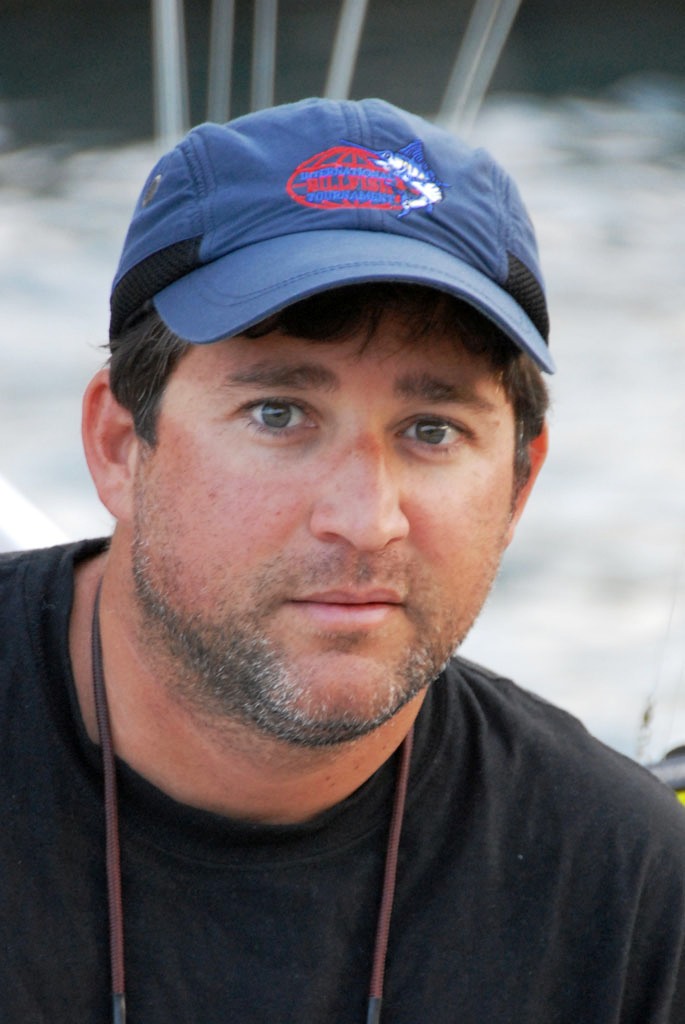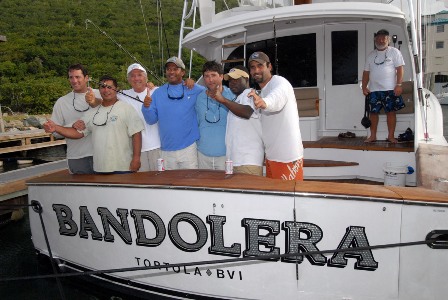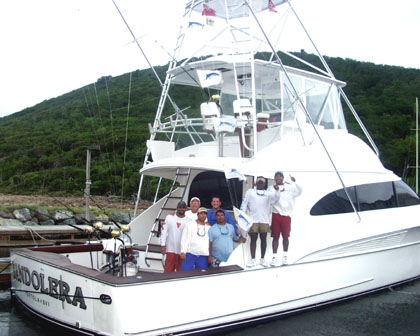What hooked Puerto Rico's Manuel Batlle on blue marlin fishing right from the start was that one-on-one, man-against-beast interaction. "I enjoy the feeling of having a fish eat right out of my hand, that connection. That's why I don't use lures. There's an art to feeding fish and to the hook-up. You really have to know what you're doing this way."
"I enjoy the feeling of having a fish eat right out of my hand, that connection. That's why I don't use lures. There's an art to feeding fish and to the hook-up. You really have to know what you're doing this way."
Born and raised in Guaynabo, Puerto Rico, Batlle started fishing with his father as a young boy. "We lived in the Dominican Republic, the capitol of Santa Domingo, during the 1970's and had a Seacraft 23. We'd go out fishing for fun on the weekends, mostly meat fish, but sometimes for billfish too."
Fifteen years ago, he made the jump to competitive world-class fishing and traded in his then 30-footer for a 47-foot Davis. "I'd fish Puerto Rico aboard it, and take it to the Virgin Islands and the Dominican Republic sometimes. But, it got old after awhile deck loading with fuel for the two day trip down to Venezuela."
Hence, Batlle worked with a naval architect from Palm Beach, Florida, to design his dream boat. He took his plans to FNS who built him the 61-footer he dubbed, Bandalero. It earned Top Boat right out of the box at the 2006 USVI Open/Atlantic Blue Marlin Tournament.
"What I wanted, and designed, was a modern look with aesthetically-pleasing curves," Batlle says, describing the highlights of Bandalero. "I also wanted a boat with range, speed and seaworthiness. Also fuel efficiency. Of course, we have all the comforts aboard. Three staterooms. Satellite TV. Telecommunications. But, when I fish, I don't work. I fish."
Employment as a professional real estate developer affords Batlle time to fish some 60 to 100 days a year.
 "We start off the year from January through March in Casa de Campo (the Dominican Republic) fishing for blue marlin," he says. "I'm in heaven now, because we bought a villa and I can have my wife and two girls (ages 5 and 6) join me, rather than me having to be away from them all weekend."
"We start off the year from January through March in Casa de Campo (the Dominican Republic) fishing for blue marlin," he says. "I'm in heaven now, because we bought a villa and I can have my wife and two girls (ages 5 and 6) join me, rather than me having to be away from them all weekend."
He adds, "Last year, I took my girls bottom fishing off the south coast of the Dominican Republic, in Eagle Bay. We saw a blue marlin jump right near the boat, and hooked it just as we put the lines done to bottom fish. The girls loved it. Seeing this magnificent fish jump so close to the boat and then to release it."
Batlle typically heads to Venezuela come April, but this year he stayed at Casa de Campo. Serendipitously, he ended up living the best fish story of his life.
"We went out for a normal day of fishing, to the buoys some 30 miles out," Batlle explains of the fatefully fantastic day. "The buoys are privately owned by local commercial fishermen and they attract a lot of baitfish. We started fishing, and catching. Every 25 to 30 minutes we'd hook up and release another blue marlin. They were all small, in the 80 to 150 pound range. Finally, we were up to 8 or 9 and we started asking each other how many blue marlin maximum everyone had seen in a day. The answers came back 9, 10, 11, 12 was the tops."
He continues, "By 4:30 p.m., we hit 12 and started getting really serious when we knew we could catch a personal record for the boat. So, we kept fishing and released our 14th blue marlin just as it was getting dark. Just before then, we could see the baitfish everywhere. They were making the surface of the water bubble because they were so abundant."
Releases of 21 blue marlin off South Africa and 16 blue marlin off Venezuela have all been documented as record high catches for a day. However, Batlle believes Bandalero's 14 releases in a single day might be a Caribbean record.
Come May, June and July, he is back in the Dominican Republic, this time off Punta Cana fishing for white marlin.
"White marlin are more finicky than blues. That's how I learned to billfish, on whites. It was trial and error. I missed a lot in the beginning, but I also learned a lot," Batlle says.
August means St. Thomas for blues, then to Venezuela from August through November for whites, blues and sailfish.
 Through the year Batlle competes in an average of eight tournaments, including the La Guaira Shoot-Out in Venezuela, USVI Open/Atlantic Blue Marlin or 'Boy Scout' Tournament, and the Club Nautico de Boqueron Light Tackle Tournament. This year, he's also registered Bandalero for the inaugural Spanish Main Series - a quintet of events that includes tournaments in Venezuela, the Dominican Republic, Puerto Rico and the U.S. Virgin Islands.
Through the year Batlle competes in an average of eight tournaments, including the La Guaira Shoot-Out in Venezuela, USVI Open/Atlantic Blue Marlin or 'Boy Scout' Tournament, and the Club Nautico de Boqueron Light Tackle Tournament. This year, he's also registered Bandalero for the inaugural Spanish Main Series - a quintet of events that includes tournaments in Venezuela, the Dominican Republic, Puerto Rico and the U.S. Virgin Islands.
"I played competitive tennis from the age of 10 to 18, so I like competition," he says. "What I like best is serious competition. We're a serious team. We fish for 8 to 10 hours straight, and yes, we might joke, but we're serious about our fishing. We're not drinking. We're not in the salon."
Batlle's team is a carefully chosen group of anglers from Puerto Rico who have fished together for five years, in addition to crew, Capt. Nestor Pena from Venezuela and mate Freddy Medina who hails from the Dominican Republic.
About the Spanish Main Series, Batlle says, "I like anything that brings together serious sports fishermen."
In the future, Batlle looks forward to next year's implementation of a new law that requires the use of circle hooks. "We've used circle hooks for the past four years," he says. "It takes more skill and it's a bigger challenge to catch and release fish this way, and that's good for the sport."
Photos contributed by Dean Barns
